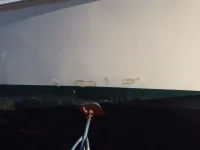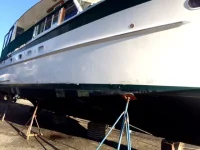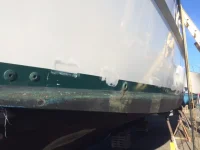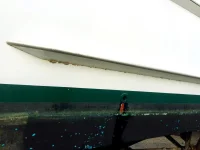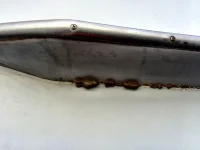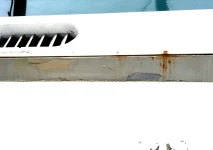1966 Contagious
Member
- Joined
- Sep 28, 2014
- Messages
- 40
- Status
- OWNER - I own a Hatteras Yacht
- Hatteras Model
- 50' MOTOR YACHT (1964 - 1968)
Hello,
New to painting boats, just made the mistake of doing a little sanding on my 1966 50' hatteras, after finding out I should have deglazed the wax off first. Thank goodness it really wasn't a lot of the boat. Is that going to make that big difference before I deglaze the rest of my yacht. I used 100 grit on a grinder sander. Now how do I fix that mistake help help : ) Let me say I'm a toolmom, handy went to school for carpentry/cabinetry, I'm cheap don't want to pay 80.00 hr yard labor. This all started because the rub rails are really looking cruddy and I was worried it can wait another 2 years to be painted, since it's hauled out for bottom paint now it needed to be addressed. I plan to rent a scissor lift for all the work. Going to use Pettit easy epoxy paint.
New to painting boats, just made the mistake of doing a little sanding on my 1966 50' hatteras, after finding out I should have deglazed the wax off first. Thank goodness it really wasn't a lot of the boat. Is that going to make that big difference before I deglaze the rest of my yacht. I used 100 grit on a grinder sander. Now how do I fix that mistake help help : ) Let me say I'm a toolmom, handy went to school for carpentry/cabinetry, I'm cheap don't want to pay 80.00 hr yard labor. This all started because the rub rails are really looking cruddy and I was worried it can wait another 2 years to be painted, since it's hauled out for bottom paint now it needed to be addressed. I plan to rent a scissor lift for all the work. Going to use Pettit easy epoxy paint.
Last edited:

